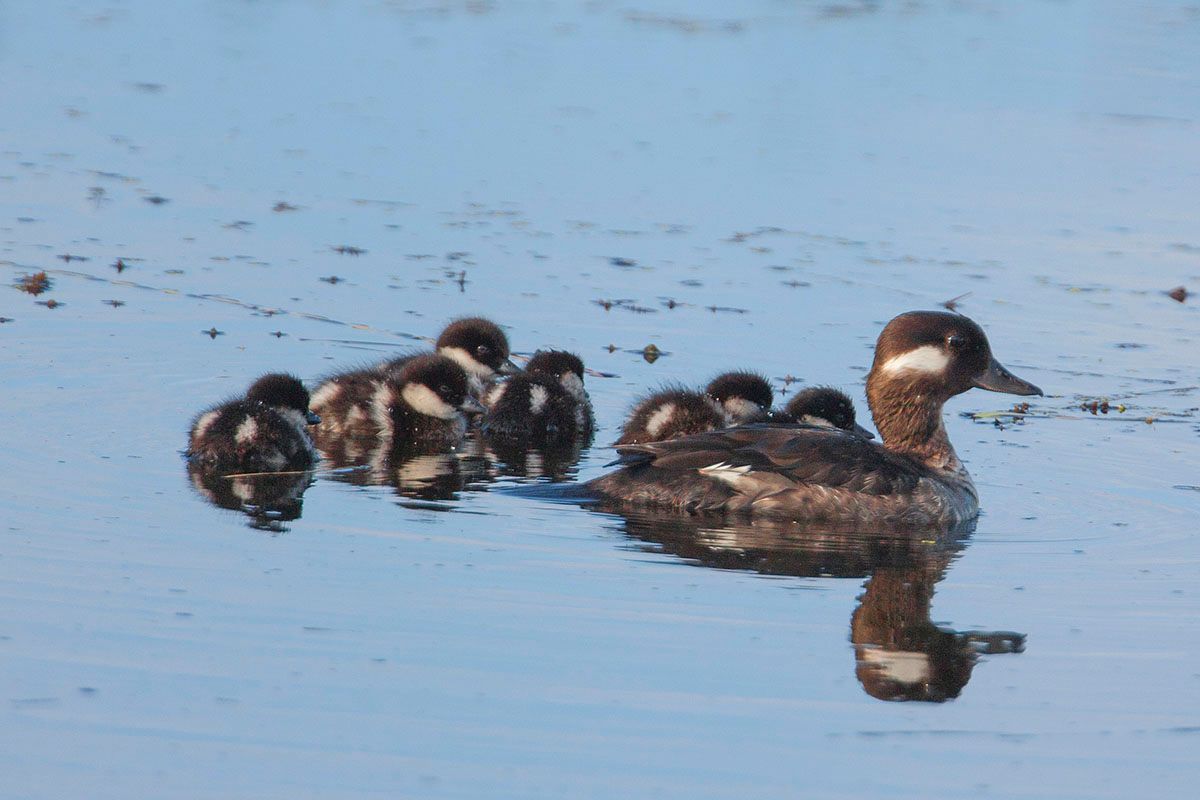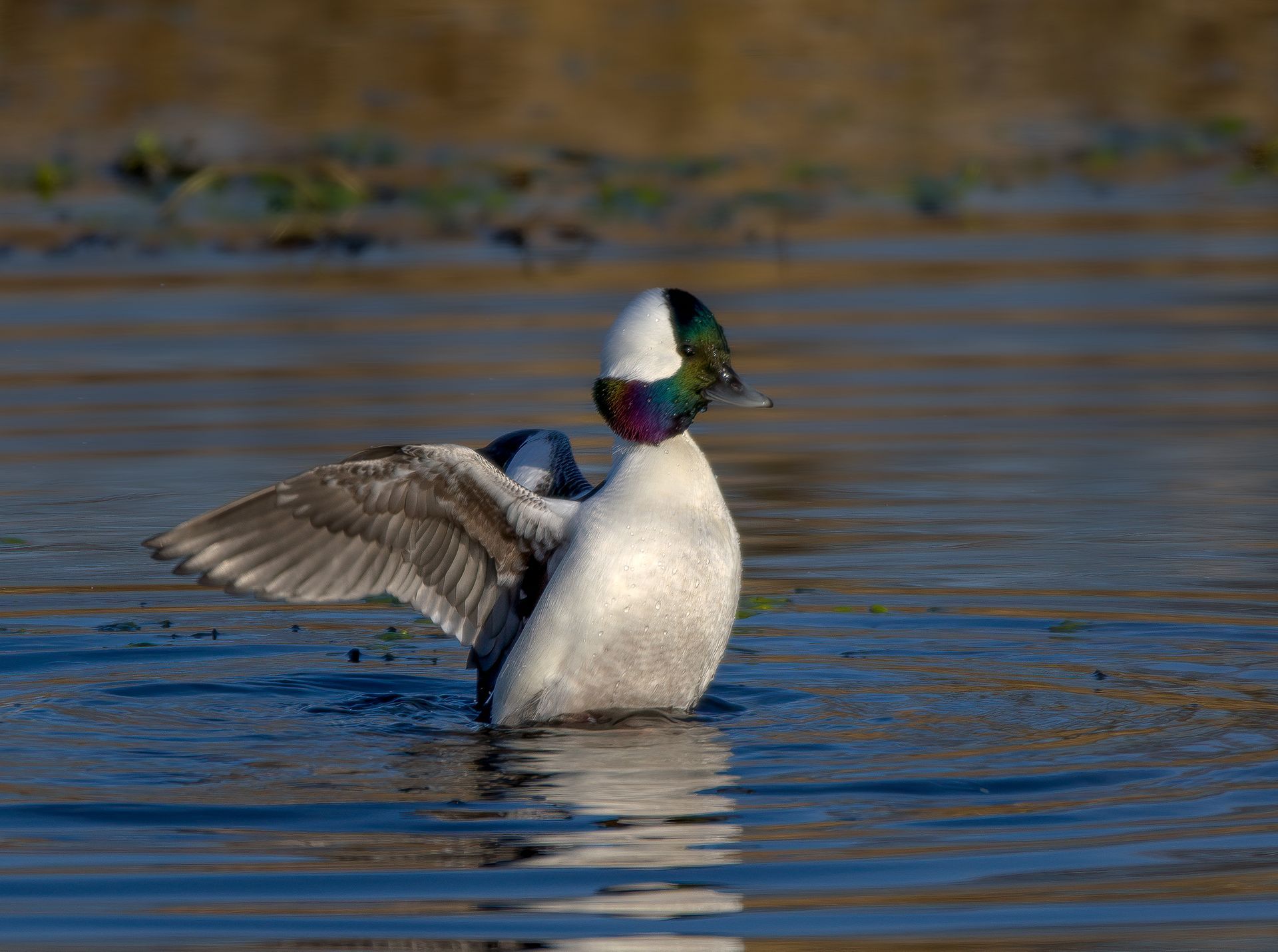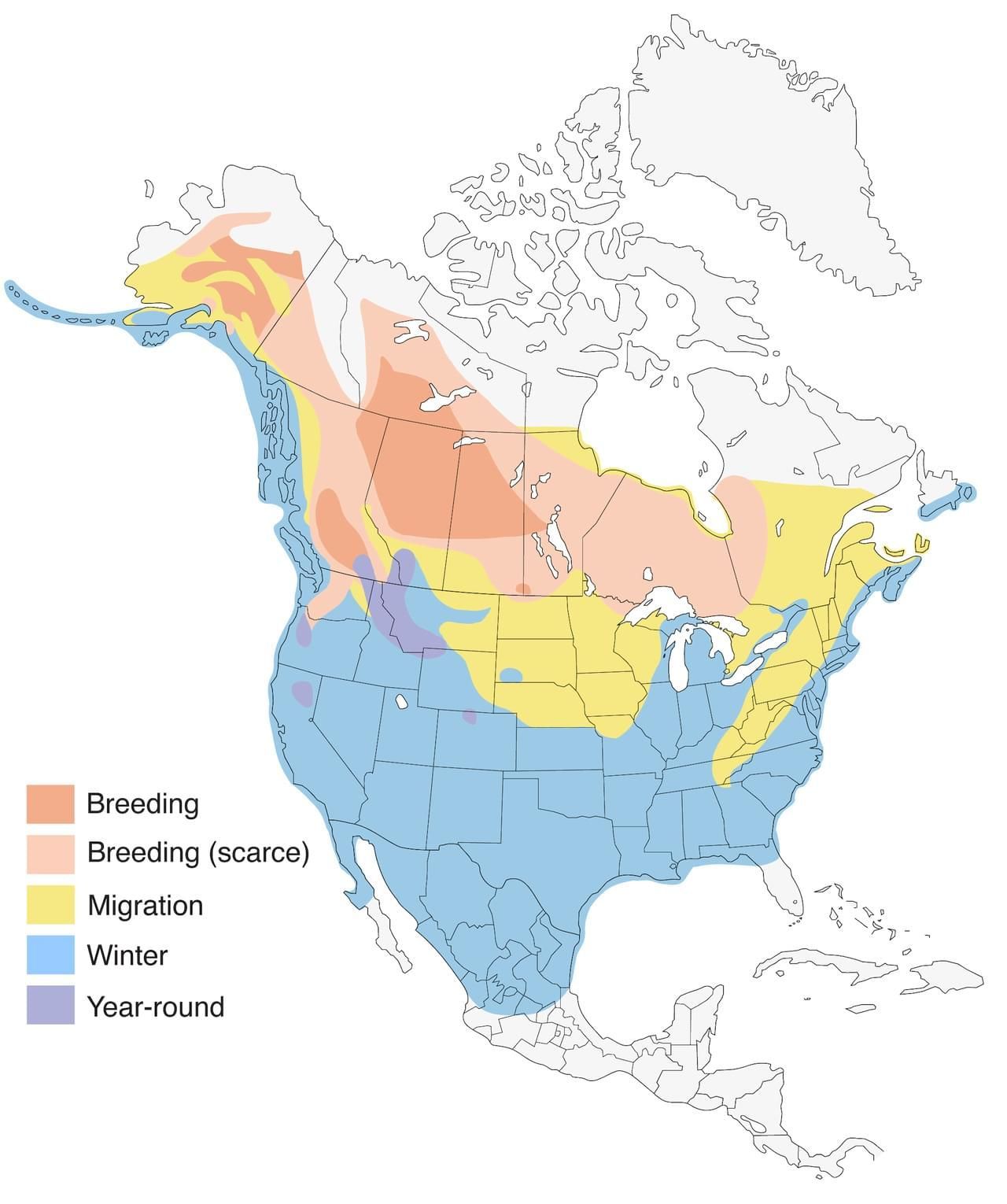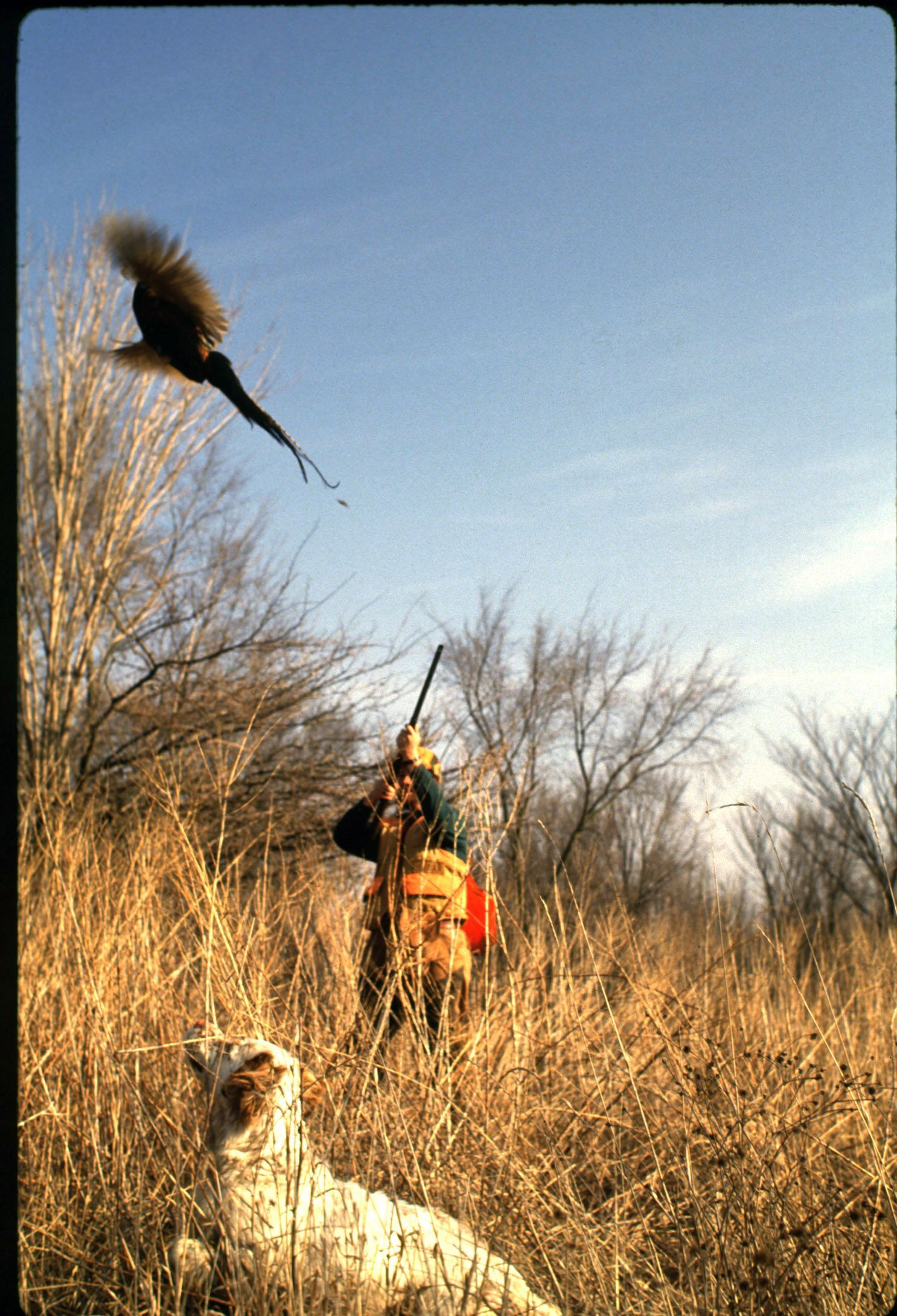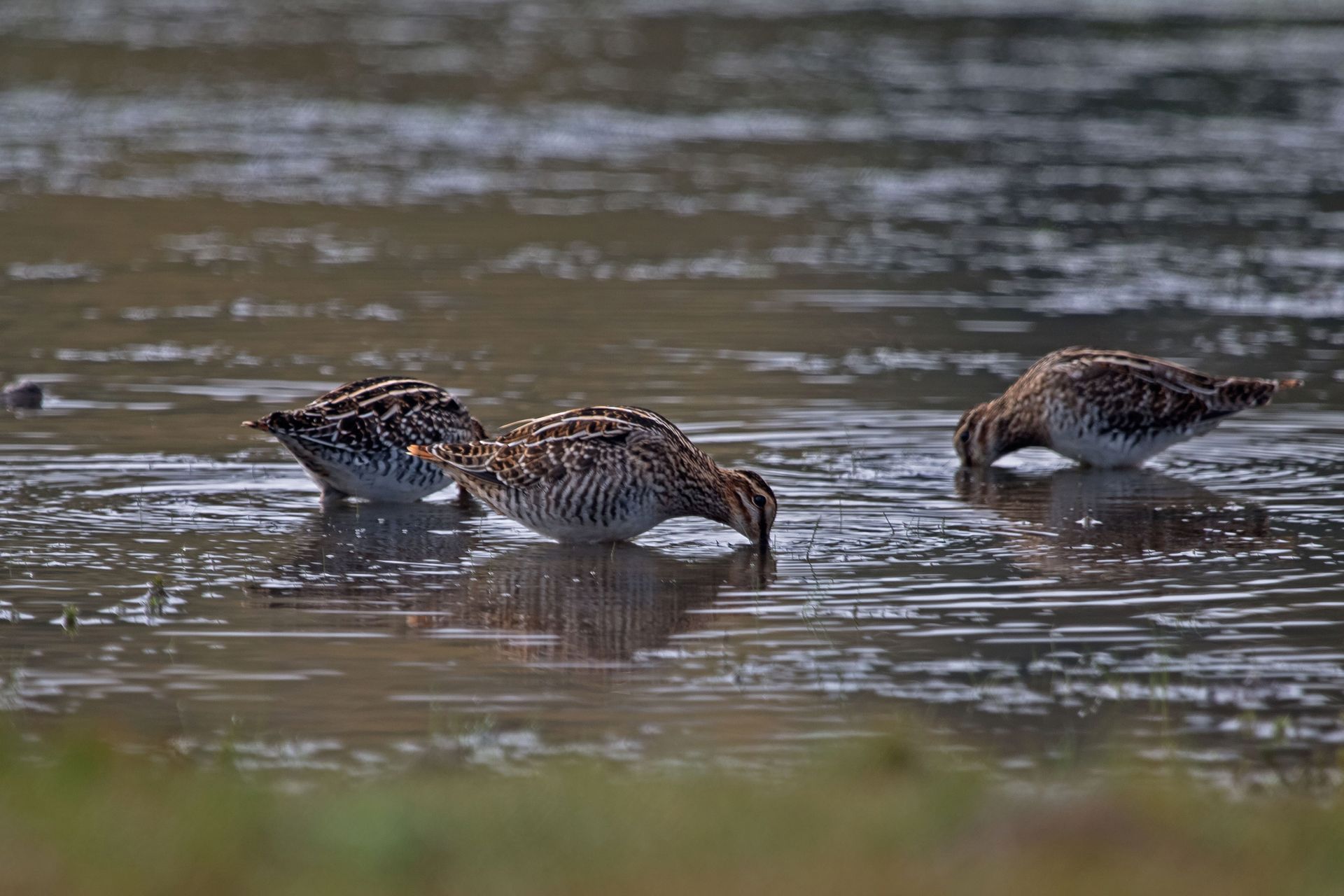Art for Conservation: The Federal Duck Stamp Competition
History
Since 1934, the duck stamp has been required for individuals over 16, alongside state licensing and permits to legally hunt migratory birds in Michigan. 98% of proceeds from the sale of these stamps contribute to conservation efforts of wetland habitat, which hunters often traverse in their efforts to bag game, particularly waterfowl. The enhancement of this habitat not only promotes quality outdoor recreation opportunities but also provides an economic incentive locally. Starting in 1949, designing the stamp became a friendly competition for artists to submit their work to be featured as the duck stamp of the year.
Current Status
Since the inception of the federal duck stamp raising funds to conserve wetlands, more than 6 million acres have been acquired, making space for over 300 national wildlife refuges. In 2025, artist James Hautman’s acrylic rendition of buffleheads coasting over water achieved first place in the annual federal duck stamp competition. The conservation status of buffleheads is considered to be of low concern.
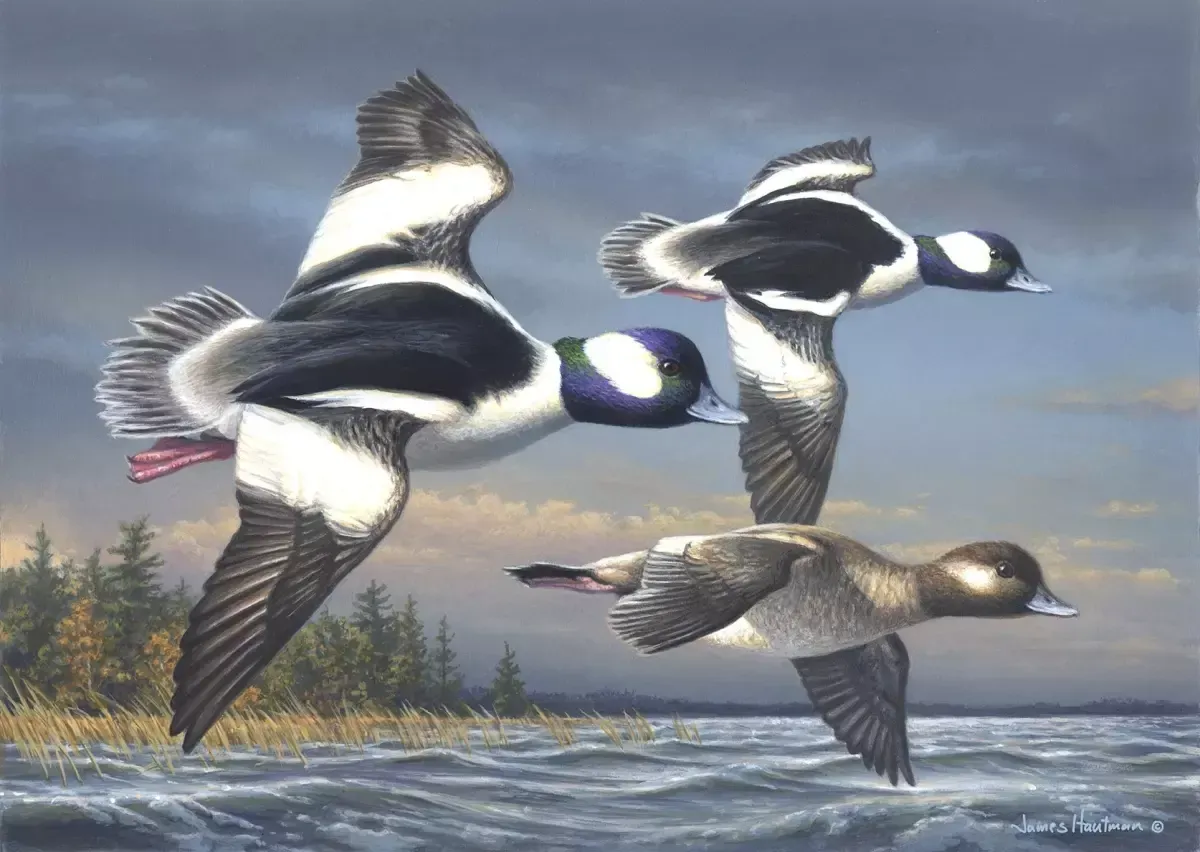
Characteristics
Male buffleheads appear black and white with an iridescent look to the head feathers surrounding the white patch. Females and juveniles are a muted gray-brown color with a smaller cheek patch compared to the males. This species is considered to be a diver duck as it can be seen fully submerged in search of food by compressing their feathers.
Conservation
The oldest known fossil related to buffleheads dates back approximately 2 million years, found in California during the Pliocene era. Today, the oldest known individual was found to be almost 19 years old in New York, according to banding research used for bird identification and data collection. Buffleheads are a migratory bird, spending warmer months in Canada and moving south to overwinter in the United States and Central America, including Michigan. This species of duck often nests in holes created by the northern flicker or small nest boxes installed before the breeding season, similar to that of a wood duck.
Learn More
To learn about how the duck stamp design process works to enter into the competition, the Fish and Wildlife Service has guidelines available, as well as a gallery in their library. Michigan United Conservation Clubs is a statewide non-profit organization dedicated to conserve, protect, and enhance Michigan's natural resources and outdoor heritage. To learn more about what MUCC does for conservation and the impact we have had, visit our On the Ground page.

